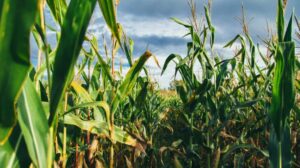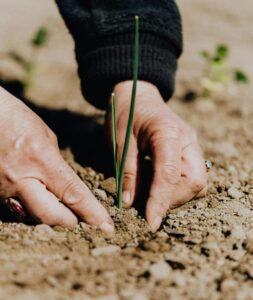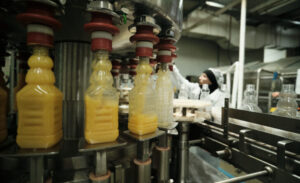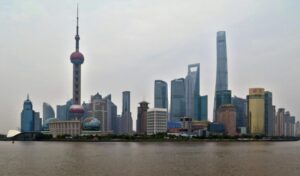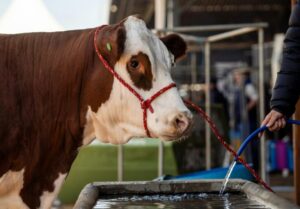Introduction
The 13th of the Sustainable Development Goals (SDGs) addresses climate.
Several gases in the atmosphere trap energy from the sun – and warm the earth. Without this “greenhouse effect” life would not be possible on this planet. Our activities over the past two centuries though, especially the burning of fossil fuels like coal and oil, have increased the building up of greenhouse gases in the atmosphere. More energy from the sun is being trapped and the earth is becoming warmer. “Global warming” refers to this enhanced greenhouse effect.
It is true that our planet goes through natural cycles of change, lasting hundreds of years. In that amount of time, though, plants and animals are able to adapt. The manner in which humanity is developing though has speeded up the changes in climate, leaving less time to adapt and placing our ecosystems in danger.
And so we are seeing more intense rainstorms, a decrease in rainfall frequency, droughts of higher intensity, greater rainwater runoff and thus soil erosion (Du Pisani 2020). These changes present serious challenges to agriculture and forestry, and to the societies and economies that depend on these sectors for food, fibre and livelihoods.
The mainstream climate change/global warming is disputed by a significant minority of scientists. Interested readers can visit http://ecosense.me, or Google Dr Patrick Moore and others and see where the trail leads …
Causes and Effects of Climate Change (National Geographic, 2017), a three-minute video summary
Mitigation: what can we do to slow the process down?
Mitigation entails all human interventions that reduce the sources or enhance the sinks of greenhouse gases.
The enhanced greenhouse effect can be slowed down by following two guidelines:
- increase sinks
- decrease sources of greenhouse gases
A sink is a process which removes greenhouse gases from the atmosphere. For example: growing a tree where one did not previously exist provides a sink for carbon dioxide, because the tree “extracts” carbon dioxide for photosynthesis.
The energy sector is the largest single source of greenhouse gases in South Africa. Integrated energy planning at the national level should ensure the optimum overall mix of energy sources, with clean coal technologies expected to be part of such a mix for the medium-term future.
Agriculture and climate change
The percentage of Agriculture’s contribution to climate change is disputed, and ranges from 22% down to somewhere between 10% and 5%. The largest portion of this is attributed to livestock (but see the note on the Savory Institute under the “International business environment” heading).
Research shows that agriculture has a huge potential to cost-effectively reduce greenhouse gases through changes in agricultural technologies and management practices, particularly in developed countries. Climate-smart agriculture includes proven practical techniques including mulching, intercropping, conservation agriculture, crop rotation, integrated crop-livestock management, agro-forestry, improved grazing and improved water management.
Climate changes create risks and uncertainty with potentially serious downsides. Without strong adaptation measures, climate change could reduce food crop production by 10 to 20 percent by the 2050s, with more severe losses in Africa. With nine billion people expected to inhabit the world by 2050, food production in Africa alone must be tripled, according to experts.
Climate Change and South African agriculture
Impacts and adaption options
Peter Johnston, Climate Scientist and Researcher at the University of Cape Town makes the following advice for farmers:
- Reassess marginal crops. If crops have been shown to be very drought sensitive and a combination of temperature increases and variable rainfall are an increased threat, then more appropriate crops should be considered.
- Select appropriate seed cultivars for the forecasted seasonal climate conditions. (Specific cultivars of a crop type are bred or designed for example for shorter or longer growing seasons, rainfall amounts and temperature.)
- Diversify, by growing a variety of crops or by pursuing other on-farm activities, such as agro-tourism or intensive high-value crops. This spreads risk and tests the potential of other activities and their income generation.
- Use conservation agriculture techniques such as minimal or no-till methods, intercropping (mixing crop types in one field) and cover cropping (introducing alternative crops in successive years on the same field). These techniques conserve soil moisture, encourage soil health and reduce dependence on fertiliser and herbicides.
- Focus on reducing post-harvest losses through heat as well as excessive or unseasonal rainfall.
- Use an ecologically beneficial combination of crops and livestock to restore soil productivity and balance income and expenditure, especially during times of drought, in a financially sound way.
- Access and learn about climate information so that seasonal climate forecasts can be used and applied.
- Liaise with other farmers, academics and agricultural organisations to keep abreast of the latest developments.
Source: https://theconversation.com/farming-in-south-africa-is-under-threat-from-climate-change-heres-how-125984
National strategy and government contact
South Africa’s commitment to climate change interventions is guided by the United Nations Framework Convention on Climate Change, the Millennium Declaration and the Paris Climate Agreement.
South Africa’s Just Energy Transition Partnership (JETP) was announced at COP26 (2021), and $8.5-billion (R128-billion) in concessional climate financing offered from various developed countries (COP27, 2022). The JETP is an international partnership to help South Africa move away from its dependence on coal.
The Climate Change Act (passed into law in July 2024) “seeks to provide for a just transition away from South Africa’s current carbon-intensive energy system and towards a decarbonised economy and society, while meeting the country’s critical development challenges”. South Africa’s response to climate change had previously been governed by the National Climate Change Response White Paper (approved by Cabinet in 2011), and the National Climate Change Adaptation Strategy (NCCAS) (approved in 2020).
GOVERNMENT ROLE PLAYERS
Presidential Climate Commission www.climatecommission.org.za
Department of Forestry, Fisheries and the Environment (DFFE) www.dffe.gov.za
Department of Trade, Industry and Competition (the dtic) www.thedtic.gov.za
Department of Agriculture Directorate: Climate Change and Disaster Management www.nda.gov.za
Department of Cooperative Governance and Traditional Affairs South African National Disaster Management Centre www.ndmc.gov.za
Department of Electricity and Energy www.dmre.gov.za
- South Africa’s is a coal-based economy, and as such ranks amongst the highest emitters of greenhouse gases in the world. It needs to explore clean energy initiatives, manage demand, and move towards a low-carbon economy. Read about the various projects and programmes on the website.
- The Clean Development Mechanism (CDM) is one of the two project-based flexible mechanisms of the Kyoto Protocol. Under the rules of the CDM, each host country must establish a Designated National Authority (DNA). Find the “Designated National Authority” option on the website.
Department of Mineral and Petroleum Resources
www.dmre.gov.za
National Treasury www.treasury.gov.za
- Find the Carbon Tax Bill on the website.
Department of Water & Sanitation www.dws.gov.za
Role players
View the Premium Listings below (scroll down or click on “Premium Listings” on the Table of Contents to the right).
Further reference:
- Nedbank, in partnership with the Sustainability Institute (Stellenbosch University) launched Carbon footprinting: A practical calculation guide focusing on measuring, monitoring, reporting and verification. Find the free publication on the Internet.
- Read about the Smart Agriculture for Climate Resilience (SmartAgri) project at www.greenagri.org.za (find “SmartAgri” option). It is a collaboration between the Western Cape Department of Agriculture (DOA) and the Western Cape Department of Environmental Affairs & Development Planning (DEA&DP), and the University of Cape Town’s African Climate and Development Initiative (ACDI).
International business environment
- The Intergovernmental Panel on Climate Change (IPCC) heads up the global response to climate change, www.ipcc.ch. See also the website of the United Nations Framework Convention on Climate Change (UNFCCC), www.unfccc.int.
- African Climate Alliance (ACA) https://africanclimatealliance.org
- The African Development Bank (AfDB) – www.afdb.org
- Read about the climate change policy in Australia, www.dcceew.gov.au/climate-change/policy
- The C40 Cities Climate Leadership Group (C40) – www.c40.org
- The Cairns Group Farm Leaders regularly have statements on the need for global policies to meet the challenges of climate change – www.cairnsgroupfarmers.org. Agri SA and Agbiz are part of this international farmer organisation.
- Read about the Carbon Disclosure Project (CDP) at www.cdp.net.
- Carbon Offset Guide – www.offsetguide.org
- The Carbon Trust – www.carbontrust.com – works to accelerate the move to a low carbon economy.
- Find out about the CarbonNeutral Protocol – www.carbonneutral.com
- The Center for International Forestry Research – www.cifor.org
- Climate Law and Governance Initiative www.climatelawgovernance.org
- Collaborative Partnership on Forests (CPF) www.un.org/esa/forests/collaborative-partnership-on-forests/index.html
- Find the webpages on climate adaptation & mitigation on the website of CGIAR (Consultative Group on International Agricultural Research) – www.ccafs.cgiar.org.
- Climate Action Network (CAN) https://climatenetwork.org
- Climate Investment Funds – www.cif.org
- Climate Power – https://climatepower.us
- Climate Reality Project – www.climaterealityproject.org
- First Climate is a carbon asset management company – www.firstclimate.com
- Find the Food, Agriculture and Natural Resources Policy Analysis Network (FANRPAN) website at www.fanrpan.org.
- The UN’s Food and Agriculture Organisation (FAO) climate change pages at www.fao.org/climate-change/en/. Climate change will have a major impact on the availability of water for growing food in the coming decades.
- Forest Trends – www.forest-trends.org
- Research platform FutureEarth – www.futureearth.org
- Notre Dame Global Adaptation Initiative – http://gain.nd.edu
- Global Alliance for Climate Smart Agriculture (GACSA) www.fao.org/gacsa/en/
- Global Donor Platform for Rural Development – www.donorplatform.org
- The Global Environment Facility (GEF) – www.thegef.org
- The Gold Standard is an award winning certification standard for carbon mitigation projects. Visit www.cdmgoldstandard.org.
- IDEAcarbon, experts in climate finance, environmental markets, energy commodities, and climate policy. Visit www.ideacarbon.com.
- Institute for Governance and Sustainable Development, www.igsd.org
- The International Institute for Sustainable Development (IISD) – www.iisd.org
- International Union for the Conservation of Nature (IUCN) – www.iucn.org
- Luxembourg Institute of Science and Technology www.list.lu/en/research/project/music/
- The New Climate Economy – http://newclimateeconomy.net
- REDD (Reducing Emissions from Deforestation and forest Degradation in developing countries). REDD+ includes the role of conservation, sustainable management of forests and enhancement of forest carbon stocks. www.un-redd.org
- Potsdam Institute for Climate Research www.pik-potsdam.de/en
- Proparco www.proparco.fr Climate, environmental, developmental finance
- Livestock make a substantial contribution to global GHG emissions? Livestock are key to combating one of the major causes of climate change – desertification! Read about the work of the Savory Institute at https://savory.global.
- South African Development Community (SADC) – www.sadc.int
- The amount of money involved in climate change investments requires transparency, says global anti-corruption coalition Transparency International (TI). Visit www.transparency.org.
- The Energy and Resources Institute (TERI) in India – www.teriin.org
- The UK government web pages on its response to climate change, www.gov.uk/government/policies/climate-change-international-action
- United Nations Environmental Programme (UNEP) – www.unep.org
- United Nations Foundation – https://unfoundation.org
- We mean Business Coalition – www.wemeanbusinesscoalition.org
- World Bank – www.worldbank.org
- The World Bank’s Carbon Pricing Dashboard, https://carbonpricingdashboard.worldbank.org
- World Business Council For Sustainable Development – www.wbcsd.org
- World Economic Forum www.weforum.org
- World Farmers’ Organisation (WFO): find the “Climakers” option at www.wfo-oma.org
- World Meteorological Organisation (WMO) – www.wmo.int
- Systems Change Lab (part of the Economics Center at World Resources Institute) – www.wri.org/initiatives/systems-change-lab
- Find the climate pages under the “Our work” option at www.panda.org, website of the World Wide Fund for Nature (WWF).
- “We’re building a global climate movement”, 350.org
Websites and publications
- Visit websites mentioned earlier on this page. Various reports and publications are available from role players. The Just Transition Pulse newsletter is brought out by the Presidential Climate Commission (PCC) is one such example. Receive it by mail or download it at www.climatecommission.org.za.
- Collier D, Godfrey S, Oniga V & Osiki A. 2024. Optimising labour law for a just transition. National Economic Development and Labour Council (Nedlac). Available at https://centrow.org/wp-content/uploads/2025/01/4_2024_JustTransition_Collier_Godfrey_Oniga_Osiki.pdf
- CLIMADE consortium. 2024. Climate Change and Epidemics 2024 Report. Available at https://climade.health/climade-cop29-report
- Section27. 2024. Climate Change as a Human Rights Risk: A Resource for Health and Education Rights Activists in South Africa. Polity. Available at www.polity.org.za/article/climate-change-as-a-human-rights-risk-a-resource-for-health-and-education-rights-activists-in-south-africa-2024-07-11
- Watch the Nation in Conversation video (2023, May 16) “Climate change: Create a climate for change” at www.nationinconversation.co.za.
- A chapter in the Bureau for Food & Agricultural Policy (BFAP) Baseline 2022-2031 was termed “Climate change impacts: Mitigation and adaption requirements for the South African agricultural sector”. See www.bfap.co.za.
- Find the “essential guide” Environmental Commodities: What Are They & How Can You Trade Them? (updated 2022, April) at https://commodity.com/environmental.
- Available from www.greenagri.org.za is the SmartAgri Barometer, an publication containing climate-smart information for farmers.
- www.worldviewofglobalwarming.org – photographic documentation of climate change by Gary Braasch
- Schulze , RE (ed). 2016. Handbook for Farmers, Officials and Other Stakeholders on Adaptation to Climate Change in the Agriculture Sector within South Africa. Department of Agriculture, Forestry and Fisheries. Available at www.nda.gov.za.
- Find the Carbon Footprint Calculator under “Agri-Tools” at www.elsenburg.com.
- Skeptical Science, www.skepticalscience.com
Some articles:
Agriculture and climate change
- See our blog “Scratch-head moments: Agriculture and the plans to move Mpumalanga off coal“.
- Price I. 2024, November 25. “Livestock and Climate Solutions Hub launched at Cop29”. Food for Mzansi. Available at www.foodformzansi.co.za/livestock-and-climate-solutions-hub-launched-at-cop29
- Arnoldi M. 2024, November 20. “AgriSA says agriculture’s ability to reduce emissions recognised at COP29”. Engineering News. Available at www.engineeringnews.co.za/article/agrisa-says-agricultures-ability-to-reduce-emissions-recognised-at-cop29-2024-11-21
- Legge J & Momberg E. 2024, September 5. “First carbon offsetting project for 90,000 hectares registered”. Endangered Wildlife Trust. Available at https://ewt.org.za/carbon-offsetting-drakensberg-crane-habitat-conservation
- Price I. 2024, August 23. “FARM@UP: Africa’s first high-tech farming hub unveiled”. Food for Mzansi. Available at www.foodformzansi.co.za/farmup-africas-first-high-tech-farming-hub-unveiled/
- Crosby A. 2024, July 11. “Agbiz submits comments on sectoral emission targets”. Agbiz. Available at www.agbiz.co.za/document/open/newsletter-article-525
- Jacobs S. 2024, July 1. “Bad news about food prices in South Africa”. Daily Investor. Available at https://dailyinvestor.com/south-africa/55937/bad-news-about-food-prices-in-south-africa
- Booth M. 2024, May 13. “Why climate change is making parasitic diseases harder to predict”. The Conversation. Available at https://theconversation.com/why-climate-change-is-making-parasitic-diseases-harder-to-predict-229575
- Reporter. 2024, April 11. “Woolworths launches Farming for the Future campaign to tackle climate challenges”. Bizcommunity. Available at www.bizcommunity.com/article/woolworths-launches-farming-for-the-future-campaign-to-tackle-climate-challenges-231177a
- Adom PK. 2024, February 28. “Climate change: alarming Africa-wide report predicts 30% drop in crop revenue, 50 million without water”. The Conversation. Available at https://theconversation.com/climate-change-alarming-africa-wide-report-predicts-30-drop-in-crop-revenue-50-million-without-water-224543
- Hlalethwa L. 2023, December 11. “Changing the sustainability course for the agri-processing sector”. South African Business. Available at www.southafricanbusiness.co.za/12/2023/agriculture-forestry-fishing/changing-the-sustainability-course-for-the-agri-processing-sector/
- Omotoso AB & Omotayo AO. 2023, November16. “Climate change and farming: economists warn more needs to be done to adapt in sub-Saharan Africa”. The Conversation. Available at https://theconversation.com/climate-change-and-farming-economists-warn-more-needs-to-be-done-to-adapt-in-sub-saharan-africa-215631
- See our blogs “Food prices will climb everywhere as temperatures rise due to climate change – new research”, “Climate-friendly beef? Argentina’s new ‘carbon-neutral’ certification could help reduce livestock emissions – if it’s done right” “South Africa’s Just Transition Energy Framework: Transforming Agribusiness Sustainably”, “Less burping, more meat and milk – how livestock farmers can help tackle the climate crisis” and “Can planks and paper packaging help solve the climate crisis?” (November 2022)
- Bulbulia T. 2022, November 7. “Agri SA welcomes representation on Presidential Climate Commission”. Engineering News. Available at www.engineeringnews.co.za/article/agri-sa-welcomes-representation-on-presidential-climate-commission-2022-11-07/rep_id:4136
- Ericksen P. 2022, November 3. “Climate change is already hitting Africa’s livestock – here’s how to address the risks “. The Conversation. Available at https://theconversation.com/climate-change-is-already-hitting-africas-livestock-heres-how-to-address-the-risks-170726
- Schroeder E. 2022, August 5. “Tech innovation helps farmers with climate-smart transition”. Farmer’s Weekly. Available at www.farmersweekly.co.za/agri-news/world/tech-innovation-helps-farmers-with-climate-smart-transition/
- Scoones I. 2021, November 2. “Cows and cars should not be conflated in climate change debates”. The Conversation. Available at https://theconversation.com/cows-and-cars-should-not-be-conflated-in-climate-change-debates-171024
- Xu X. & Jain A. 2021, September 13. “Food production generates more than a third of manmade greenhouse gas emissions – a new framework tells us how much comes from crops, countries and regions”. The Conversation. Available at https://theconversation.com/food-production-generates-more-than-a-third-of-manmade-greenhouse-gas-emissions-a-new-framework-tells-us-how-much-comes-from-crops-countries-and-regions-167623
- Du Pisani L. 2020, May 13. “What livestock farmers should know about climate change”. Farmer’s Weekly. Available at www.farmersweekly.co.za/opinion/by-invitation/what-livestock-farmers-should-know-about-climate-change
- Ngumbi E. 2020, February 25. “How changes in weather patterns could lead to more insect invasions”. The Conversation. Available at https://theconversation.com/how-changes-in-weather-patterns-could-lead-to-more-insect-invasions-131917
- Odendaal N. 2020, February 7. “Growing concern over impact climate change may have on water security”. Engineering News. Available at www.engineeringnews.co.za/article/growing-concern-over-impact-climate-change-may-have-on-water-security-2020-02-07
- Patel O. 2020, January 22. “Pasha 50: The threat of climate change to South Africa’s agriculture”. The Conversation Africa. Available at https://theconversation.com/pasha-50-the-threat-of-climate-change-to-south-africas-agriculture-130137
- Johnston P. 2019, November 12. “Farming in South Africa is under threat from climate change. Here’s how”. The Conversation. Available at https://theconversation.com/farming-in-south-africa-is-under-threat-from-climate-change-heres-how-125984
- “We Feed the World: photo stories of farmers fighting climate change in five continents” is a gallery of pictures showing small-scale farmers and how they have adapted to climate change. See www.theguardian.com/environment/gallery/2018/oct/09/we-feed-the-world-photo-stories-of-farmers-fighting-climate-change-in-five-continents
- Find articles like “Why climate change is a threat to livestock production” and “Climate variability versus climate change” in Farmer’s Weekly or its website www.farmersweekly.co.za.
Climate change – general
- Bloomberg. 2025, June 13. “R46 billion plan to dump coal in South Africa.” Daily Investor. Available at https://dailyinvestor.com/energy/90777/r46-billion-plan-to-dump-coal-in-south-africa
- Burger S. 2025, March 17. “Climate Change Act implementation starts”. Engineering News. Available at www.engineeringnews.co.za/article/climate-change-act-implementation-starts-2025-03-17
- Jaynes CH. 2025, March 12. “Trump’s EPA Cancels $20 Billion in Greenhouse Gas Reduction Fund Grants”. EcoWatch. Available at www.ecowatch.com/trump-epa-climate-grants-cancelled.html
- Reporter. 2025, January 9. “New law threatening South African businesses”. Daily Investor. Available at https://dailyinvestor.com/business/73457/new-law-threatening-south-african-businesses
- Manjonjo K. 2024, December 9. “COP29 failed Africa – what went wrong with the climate financing bid and what happens next”. The Conversation. Available at https://theconversation.com/cop29-failed-africa-what-went-wrong-with-the-climate-financing-bid-and-what-happens-next-245300
- Jaynes CH. 2024, December 5. “Activists and Vulnerable Nations Condemn U.S. Arguments Against Climate Obligations at ICJ Hearing”. EcoWatch. Available at www.ecowatch.com/icj-climate-change-hearing-vulnerable-nations.html
- Peel J. 2024, November 24. “From a US$300 billion climate finance deal to global carbon trading, here’s what was – and wasn’t – achieved at the COP29 climate talks”. The Conversation. Available at https://theconversation.com/from-a-us-300-billion-climate-finance-deal-to-global-carbon-trading-heres-what-was-and-wasnt-achieved-at-the-cop29-climate-talks-243697
- Reporter. 2024, November 24. “Breakthrough in Baku delivers $1.3tn ‘Baku Finance Goal'”. COP29 Baku Azerbaijan. Available at https://cop29.az/en/media-hub/news/breakthrough-in-baku-delivers-13tn-baku-finance-goal
- Reporter. 2024, November 14. “R7.6 billion loan to implement Just Energy Transition concluded “. SA News. Available at www.sanews.gov.za/south-africa/r76-billion-loan-implement-just-energy-transition-concluded
- Lopes C. 2024, November 5. “African countries shouldn’t have to borrow money to fix climate damage they never caused – economist”. The Conversation. Available at https://theconversation.com/african-countries-shouldnt-have-to-borrow-money-to-fix-climate-damage-they-never-caused-economist-241758
- Spooner M. 2024, September 17. “Four ways Africa is already seeing the effects of climate change – and what can be done about it”. The Conversation. Available at https://theconversation.com/four-ways-africa-is-already-seeing-the-effects-of-climate-change-and-what-can-be-done-about-it-238696
- Reporter. 2024, September 5. “Climate change costs Africa up to 5% of GDP, UN climate head says”. Reuters. Available at www.polity.org.za/article/climate-change-costs-africa-up-to-5-of-gdp-un-climate-head-says-2024-09-05
- Kammen DM & Akinsipe OD. 2024, August 12. “African economic expansion need not threaten global carbon targets: study points out the path to green growth”. The Conversation. Available at https://theconversation.com/african-economic-expansion-need-not-threaten-global-carbon-targets-study-points-out-the-path-to-green-growth-235396
- Hemingway Jaynes C. 2024, July 24. “South Africa Passes Its First Climate Change Act”. Ecowatch. Available at www.ecowatch.com/south-africa-climate-change-act.html
- Arnoldi M. 2024, July 17. “UFS works with council, govt to support more ‘climate smart’ research”. Engineering News. Available at www.engineeringnews.co.za/article/ufs-works-with-council-govt-to-support-more-climate-smart-research-2024-07-17
- Reporter. 2024, July 15. “South Africa aims for zero emissions by 2050”. SA News. Available at www.sanews.gov.za/south-africa/south-africa-aims-zero-emissions-2050
- Creamer T. 2024, July 15. “Carbon intensity of our economy has become unsustainable – Ramaphosa”. Polity. Available at www.polity.org.za/article/carbon-intensity-of-our-economy-has-become-unsustainable—ramaphosa-2024-07-15
- Van der Nest G. 2024, April 4. “Climate-backed Financing in Africa and Its Impact on Energy Mix, Infrastructure Development, Storage, and Trade of Surpluses”. TRALAC. Available at www.tralac.org/publications/article/16375-climate-backed-financing-in-africa-and-its-impact-on-energy-mix-infrastructure-development-storage-and-trade-of-surpluses.html
- Ernst Y & Archibald S. 2024, April 3. “Africa now emits as much carbon as it stores: landmark new study”. The Conversation. Available at https://theconversation.com/africa-now-emits-as-much-carbon-as-it-stores-landmark-new-study-226522
- Fraser A. 2023, December 14. “COP28: Historic outcomes agreed at the UN climate talks in Dubai”. 702. Available at www.702.co.za/articles/491888/cop28-historic-outcomes-agreed-at-the-un-climate-talks-in-dubai
- Daigle K. 2023, November 20. “UN climate negotiations through the years up to COP28”. Reuters. Available at www.reuters.com/business/environment/un-climate-negotiations-through-years-up-cop28-2023-11-20
- Bennet P. 2023, October 9. “Climate-Related Damage Costs $16 Million per Hour on Average Globally, New Study Estimates”. EcoWatch. Available at www.ecowatch.com/global-climate-change-damage-cost.html
- Reporter. 2023, August 24. “Rich countries urged to honour $100-billion climate finance goal”. SA News. Available at www.sanews.gov.za/south-africa/rich-countries-urged-honour-100-billion-climate-finance-goal
- Dentlinger L. 2023, May 16. “SA’s transition to green economy could take 10 years, says climate commssion”. Eye Witness News. Available at https://ewn.co.za/2023/05/16/sa-s-transition-to-green-economy-could-take-10-years-says-climate-commssion
- Bloomberg. 2023, May 16. “South Africa beats climate targets… due to load-shedding”. Daily Investor. Available at https://dailyinvestor.com/energy/17358/south-africa-beats-climate-targets-due-to-load-shedding/
- Briel G. 2023, April 10. “Recent Developments Shaping the Global Trade and Climate Landscape”. Tralac. Available at www.tralac.org/publications/article/15977-recent-developments-shaping-the-global-trade-and-climate-landscape.html

